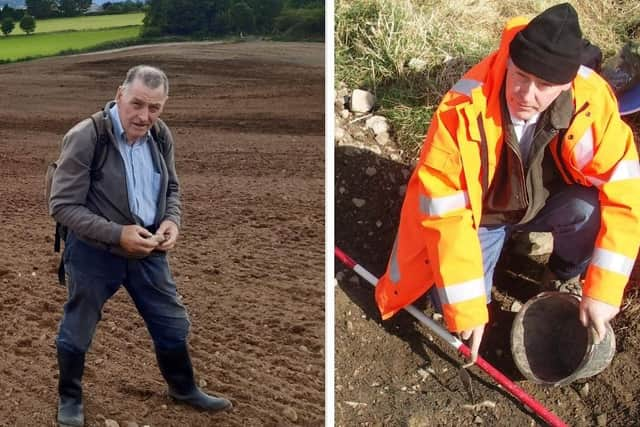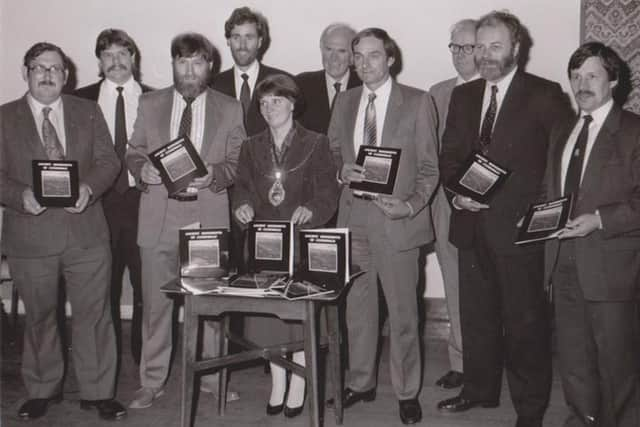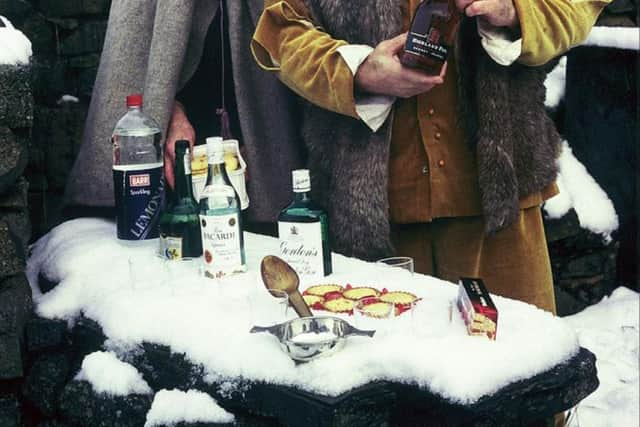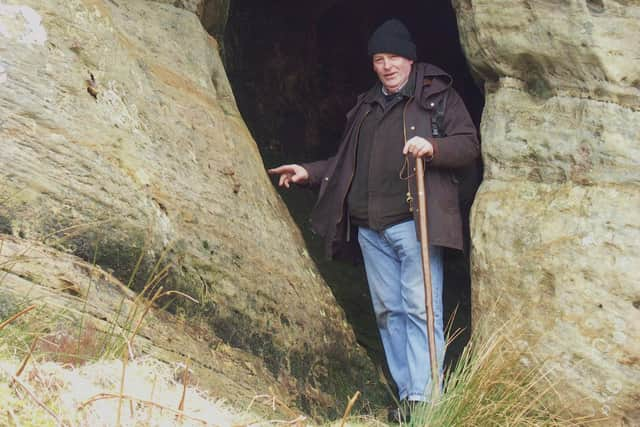A fond farewell to Tam Ward


Tam had been battling cancer for several months, both at Paisley Hospital and the Beatson.
He will not only be missed by his wife, family and friends but by the wider archaeological community, both here in Britain and in Europe.
Advertisement
Hide AdAdvertisement
Hide AdHis ground-breaking work, especially in pre-history, changed our understanding of Scottish history. There is no doubt that he was the finest amateur archaeologist of his generation.


Ed said: “I got to know Tam when I was running classes on Roman archaeology in Biggar for Glasgow University Extra Mural Department. I did this part time alongside my main job as a teacher at Biggar High.
“Tam said to me that he was a “normal person” until he came to my classes and caught the bug for archaeology.”
In his own words, published in Archaeological endeavour – a brief autobiography, last year, Tam explained how he got hooked.
Advertisement
Hide AdAdvertisement
Hide AdHe said: “My principal hobbies before leaving school were hill walking and local exploring, and after school age they became golf and shooting. After I contracted severe arthritis in my big toes, I had to pack in both the golf and the shooting as I could not walk any distance.


“I eventually got the problem sorted by surgery but, while I was convalescing, my mother-in-law told me of extra mural classes on archaeology at the local school...so I went.
“Ed Archer was talking about the Romans and I got hooked. That was in 1978...and the rest is history.”
Rapidly Tam undertook his own excavations, starting with Windgate Bastle House near Cowgill reservoir for Lanark and District Archaeological Society.
Advertisement
Hide AdAdvertisement
Hide AdHe then started Biggar Archaeology Group which was not only involved in excavation but also in educating the young people of Clydesdale.


His enthusiasm was infectious and he attracted a wide variety of volunteers who worked on a whole range of projects.
He will principally be remembered for his work on Bastle houses – fortified farmsteads of the 16th century – and a wide variety of pre-historic sites, including Biggar Common where Biggar Archaeology recovered a quarter of a ton of Late Neolithic pottery. To date this is the largest assemblage of this type of pottery eve r discovered in Scotland.
Tam and his dedicated team also revolutionised our knowledge of the Mesolithic period in Scotland. His work up at the Daer reservoir revealed not only possible dwelling sites but also the fact that they gathered hazelnuts to eat as part of their diet. This information was gathered by his meticulous approach to excavation.
Advertisement
Hide AdAdvertisement
Hide AdFrom thereon in he became a painstaking archaeologist whose recording skills were second to none, not to mention his report writing and his work in Moat Park Museum in Biggar.
He excavated sites of all periods; however, the Howburn dig was the most important – discovering that man came to Scotland as early as 16,000 years ago in the Upper Palaeolithic.
He was responsible for founding Biggar Archaeology and more recently the North Clyde Archaeological Society.
Jim said: “Tam was by far the best amateur archaeologist in Scotland if not in Britain; there was nobody who could equal his achievements or his ability to inspire others. I feel privileged to have known him and worked with him occasionally. He was truly amazing.”
Advertisement
Hide AdAdvertisement
Hide AdTam was awarded the MBE as well as securing a host of awards with his team of dedicated volunteers from Biggar Archaeology.
He had several jobs working in archaeology including directing a Manpower Services team at Summerlee, Coatbridge, working at the National Museum of Scotland and then producing a book on the Ancient Monuments of Clydesdale for Clydesdale District Council.
He was also responsible for working on Greenhill House and bridge, as well as Moat Park Museum.
He was at one time chairman of the Lanark and District Archaeological Society, after which he founded Biggar Archaeology Group. Some years later he went on to start the Peebleshire Archaeological Society.
Tam was also at one point a trustee of Biggar Museum Trust.
Advertisement
Hide AdAdvertisement
Hide AdAfter he moved in his final years to live in Rosneath, Tam founded the North Clyde Archaeological Society. He made an important discovery of evidence of Bronze Age occupation in a cave at Portkil, dating back over 4000 years.
Other work included an important record of coastal and defensive remains along the Clyde estuary. Once again he imparted his enthusiasm to a new, lower Clyde audience.
Tam will be remembered for the enormous impact he had on the world of archaeology in Scotland and on people of all ages, from nine to ninety. His truly amazing energy was remarkable.
This obituary only touches on some aspects of an extraordinary man who gave his all to explore and rewrite Scotland’s past.